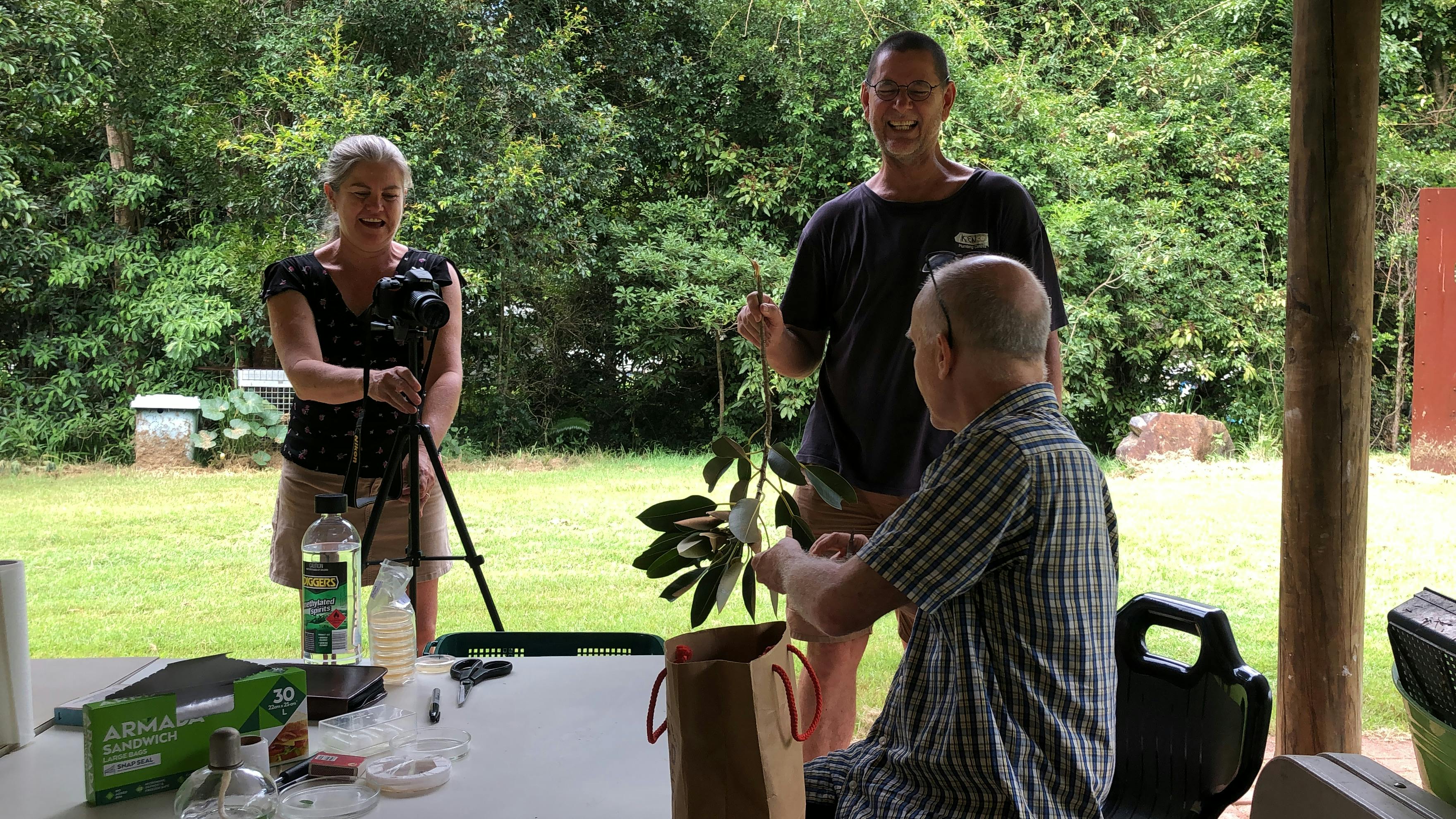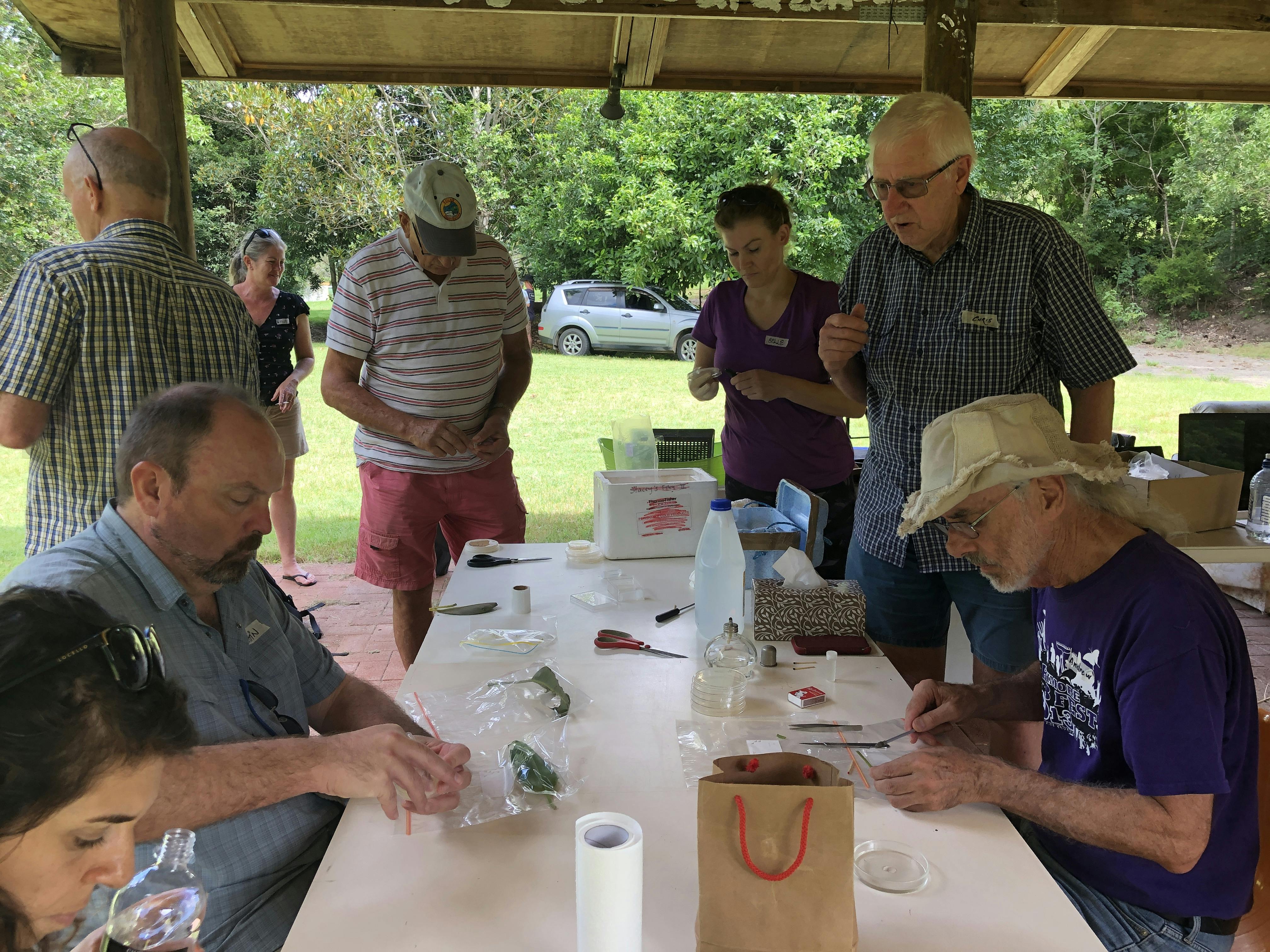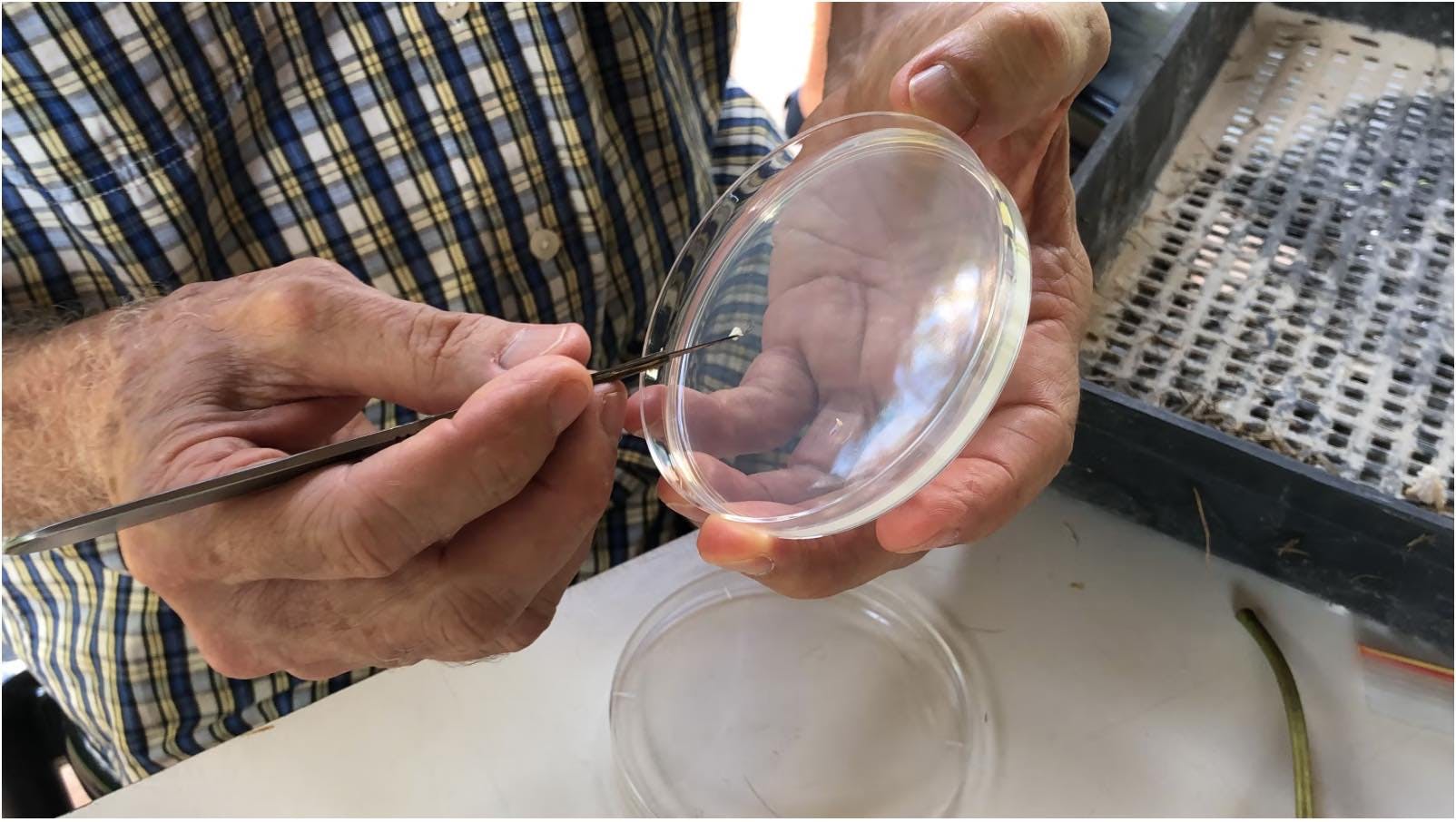Skip to content

 Exploring a fig tree for a new species of mico-fungi with Prof. Roger Shivas
Exploring a fig tree for a new species of mico-fungi with Prof. Roger Shivas
Citizen Science in discovery of new specie
On the 27’th of February, the Mycology Research Project conducted a lab session with Prof. Roger Shivas, aimed at the isolation of new micro-fungi species by a group of citizen scientists. Prof. Shivas described and demonstrated the process of isolating fungi from plants. Participants got to experience the techniques and methods of fungal isolation from a fig tree and learnt the benefits of culturing fungi for storage in herbaria.


The goal was to create an opportunity for citizen scientists to be able to set up their own lab space at home, so the materials and equipment used, were either things most people have in their kitchen, or are easily obtained and affordable.


Given the essential roles fungi play in ecosystems, animal and plant health, and research and development, there is an urgent need to learn more about this hidden Kingdom. And since the diversity and number of fungal species is staggering, the only feasible way to help mycologists to discover and identify new fungal species, is through the engagement of citizen science.


Back in his research lab, Roger incubated the samples and isolated colonies of interest into pure culture, a total of 33 fungi cultures were deposited to the Herbarium BRIP with individual accession numbers. These isolates will be cryopreserved and in the future might serve an important role in biodiscovery. DNA sequencing revealed that several of the species are new to science and two Neopestalotiopsis species will be published by Roger in the Fungal Planet journal with acknowledgments of the citizen scientists who took part in their discovery.


Following a group discussion about naming the new species with Roger and the citizen scientists involved in the discovery, the decision was made to name one of them N. woodfordia after the place of discovery and the other N. gureya, which means Moreton Bay fig in the Jinibara language to honour the tree on which the isolates grew and the Jinibara custodians of the land.
Want to print your doc?
This is not the way.
This is not the way.

Try clicking the ··· in the right corner or using a keyboard shortcut (
CtrlP
) instead.